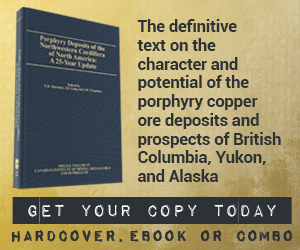Library Magazine Articles CSA Staff Notice 43-307 provides important guidance on disclosure of PEAs
CSA Staff Notice 43-307 provides important guidance on disclosure of PEAs
Greg Gosson - Nov 2012
CSA Staff Notice 43-307 Mining Technical Reports – Preliminary Assessments was published on August 16, 2012 to provide additional guidance on Preliminary Economic Assessment (PEA) disclosure standards.
Since the new NI 43-101 rules took effect in June 2011, a number of mining companies were required to clarify or retract their PEA disclosure because CSA staff considered that they did not meet the new definition of a PEA, or were blurring the boundaries between the different types of mining studies. Of particular concern was that the new PEA allowance was being used as a backdoor method to include Inferred Mineral Resources in a Preliminary Feasibility Study (PFS) or a Feasibility Study (FS).
A significant change included in the June 30, 2011 revisions to NI 43-101 was a new definition for a PEA. This definition removed the restriction that such scoping studies could only be disclosed if they were undertaken at an early stage of project evaluation prior to the completion of a PFS. It also allowed a mining company to re-scope an advanced-stage project, based on either a significant change in new information, or on an alternative mining or processing scenario. Importantly, the re-scoped project could include Inferred Mineral Resources in both the production schedules and financial analysis, as long as appropriate cautionary language and other conditions, such as the basis for the PEA and the assumptions made by the Qualified Person, were met within the disclosure. However, it is important to keep in mind the definition explicitly states that PEAs are not a PFS or an FS.
In my opinion, some of the key takeaways from the notice are:
CSA staff point out that a PEA can only demonstrate the potential viability of mineral resources and cannot be used to support mineral reserves. Only a PFS or an FS, which are more comprehensive studies, are sufficient to demonstrate both the technical and economic viability of a mineral project and to support mineral reserve declaration. Therefore, an issuer should not imply that a PEA has demonstrated the economic viability of a mineral project, or refer to mineral resources as “ore.”
Do not state that some, or all, of the components of the PEA are done at the level of a PFS, as it blurs the boundary between these different types of mining studies. If some of the technical studies supporting a PEA are performed to a higher level of detail (geotechnical or environmental baseline studies, for example) then it is appropriate to identify that information as being sufficient to support future, more advanced mining studies.
CSA staff cautioned that the use of a PEA to justify going directly to an FS or a production decision could be viewed as treating the PEA as if it were a PFS or an FS. Companies considering this course of action should clearly indicate in their disclosure why they are bypassing the industry-standard practice – progression of a mineral project through mining studies – and discuss the risks incurred by doing this.
CSA staff may challenge a PEA completed concurrently with or immediately after a PFS or an FS, if it includes Inferred Mineral Resources; this may be regarded as a way to avoid restrictions on the use of Inferred Mineral Resources in the production schedules or financial analysis in a PFS or in an FS. This is particularly the case if the PEA and PFS or FS have no significant differences in mine design or throughput rate. A re-scoped, advanced stage project done at a PEA level should have significantly different mining rates, mining or processing methods, changes to infrastructure, or the inclusion of a significant new discovery in the mine plan.
CSA staff can use the requirements for “a reasonable basis for forward-looking information,” stated under NI 51-102 Continuous Disclosure Obligations, to challenge assumptions in a PEA that appear overly optimistic or aggressive. Companies may be required to provide additional information supporting those assumptions or be required to revise the PEA using more reasonable assumptions (e.g. metal prices, mining costs and metal recoveries).
CSA Staff Notice 43-307 should be reviewed in its entirety by any company planning or completing a PEA.
Author
Greg Gosson is the technical director of Geology & Compliance for AMEC Americas Limited. He is a member of the CIM Standing Committee on Mineral Reserve and Mineral Resource Definitions, and a member of CSA Mining Technical Advisory and Monitoring Committee, which is an industry advisory committee on NI 43-101.

.png)
